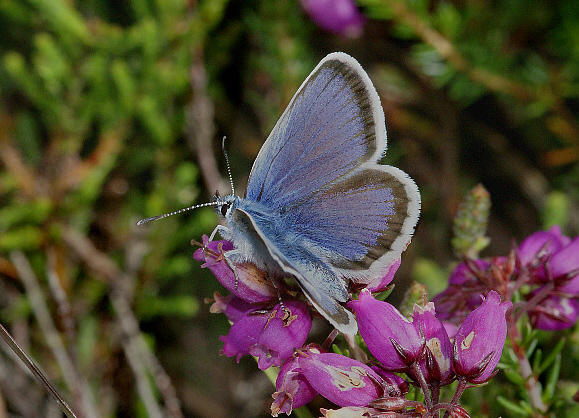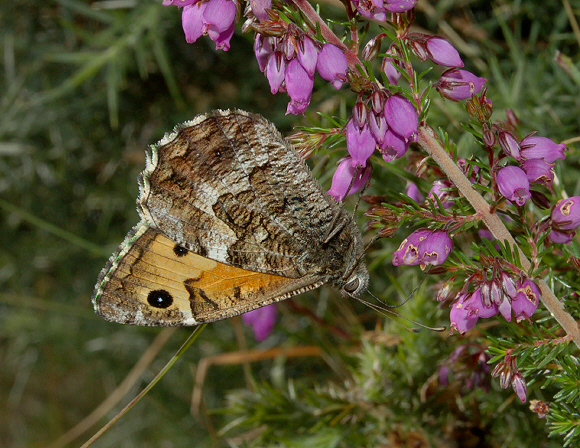British heathlands and grasslands originally came into existence when Bronze Age man cleared the ancient woodlands for cultivation. Grasslands such as the South Downs developed on calcareous soils ( chalk and limestone ) but only heathers, birch and pines could survive on poorer acidic soils.
Heathlands and moors support quite a limited range of butterflies, mainly amongst the Satyrinae, Lycaeninae, Polyommatinae and Hesperiinae.
Controlled burning
Some heaths, such as those in the New Forest and Exmoor are traditionally grazed by ponies; but controlled burning is the primary heathland management tool. Areas that are not periodically burned become very overgrown with heather, gorse, birch and young pines, and eventually revert to woodland.
Burning releases nitrates, and allows the habitat to regenerate, producing fine grasses, trefoils, milkworts and a carpet of fresh young cross-leaved heath, foodplant of the Silver-studded Blue. Fires can get out of control, so heaths nearly always have a network of wide firebreaks, and these are mown periodically, producing a mix of fine grasses and exposed soil, which is favoured by Satyrines such as the Grayling and the Small Heath.

Silver-studded BluePlebejus argus – a typical heathland butterfly, still found in thousands on certain heaths in Hampshire’s New Forest – Adrian Hoskins

Colonies of the Grayling Hipparchia semele occur on dry heathlands in southern England, and on coastal grasslands throughout Britain – Adrian Hoskins
